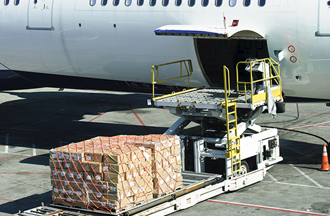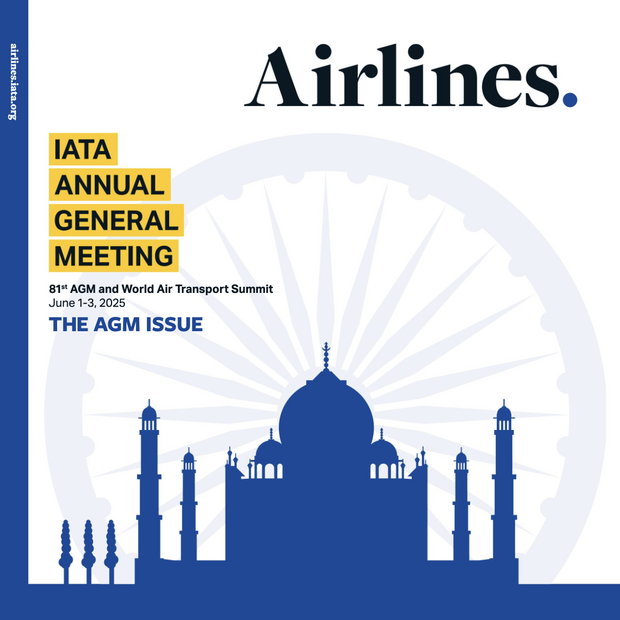
Translation:
Geneva - The International Air Transport Association (IATA) released data for May 2023 global air cargo markets showing weak market conditions.
Global demand, measured in cargo tonne-kilometers (CTKs), fell 5.2% compared to May 2022 (-6.0% for international operations).
Capacity, as measured by available cargo tonne-kilometers (ACTKs), rose 14.5% compared to May 2022, primarily driven by belly capacity which increases as demand in the passenger business recovers. Capacity is now 5.9% above May 2019 (pre-pandemic) levels.
Key factors influencing demand include
- The global manufacturing Purchasing Managers Index (PMI) indicates an annual contraction of 1.4% in new export orders and a decrease of 5.2% year-on-year in production PMI. This suggests a cooling in global manufacturing demand.
- Global goods trade decreased by 0.8% in April, due to macroeconomic challenges and supply chain constraints. Trading conditions appeared to favor maritime cargo as demand for container shipping contracted by 0.2% while air cargo demand weakened by 6.3% year-on-year.
- The global supplier delivery time PMI increased to 54.5 in May, up from its low of 35 in October 2021, indicating shorter delivery times and some relief for supply chains. However, this is also a sign of weaker global goods trade demand.
“Trading conditions for air cargo continue to be challenging with a 5.2% fall in demand and several economic indicators pointing towards weakness. The second half of the year, however, should bring some improvements. As inflation moderates in many markets, it is widely expected that central bank rate hikes will taper. This should help stimulate economic activity with a positive impact on demand for air cargo,” said Willie Walsh, IATA’s Director General.
Air cargo market in detail
May 2023 (% year on year) |
World Share1 | CTK | ACTK | CLF(%-PT)2 | CLF(level)3 |
|---|---|---|---|---|---|
|
Total Market |
100.0% |
-5.2% |
14.5% |
-8.6% |
41.5% |
|
Africa |
2.0% |
-2.4% |
9.2% |
-5.3% |
44.8% |
|
Asia Pacific |
32.4% |
-3.3% |
38.3% |
-18.2% |
44.2% |
|
Europe |
21.8% |
-6.7% |
5.6% |
-6.4% |
48.9% |
|
Latin America |
2.7% |
3.6% |
14.7% |
-3.6% |
33.3% |
|
Middle East |
13.0% |
-3.1% |
15.6% |
-7.9% |
41.0% |
|
North America |
28.1% |
-8.1% |
1.2% |
-3.8% |
37.3% |
(1) % of industry CTKs in 2022 (2) Year-on-year change in load factor (3) Load factor level
May Regional Performance
Asia-Pacific airlines saw their air cargo volumes decrease by 3.3% in May 2023 compared to the same month in 2022. This was a decrease in performance compared to April (-0.3%), mainly due to the stronger annual contraction in international air cargo demand from -3.5% in April to -6.4% this month. Available capacity in the region increased by 38.3% compared to May 2022 as more belly capacity came online from the passenger side of the business.
North American carriers saw the weakest performance of all regions for the third consecutive month with an 8.1% decrease in cargo volumes in May 2023 compared to the same month in 2022. This was a slight improvement in performance compared to April (-12.4%). Notably, airlines in the region saw the third month of double-digit contractions in volumes on the North America-Europe trade lane (-10.3%). Capacity increased 1.2% compared to May 2022.
European carriers experienced a 6.7% decrease in cargo volumes in May 2023, compared to the same month in 2022. This was an improvement in performance compared to April (-7.7%), in part due to the smaller annual contraction in international CTKs on the Europe-Middle East trade lane, from -4.7% in April to -2.9% in May. The decline in international cargo traffic on markets within-Europe also improved from -16.2% in April to -7.8% this month (seasonally adjusted). Meanwhile, capacity increased 5.6% in May 2023 compared to May 2022.
Middle Eastern carriers experienced a 3.1% year-on-year decrease in cargo volumes in May 2023. This was a slight improvement in performance compared to the previous month (-6.7%). Capacity increased 15.6% compared to May 2022.
Latin American carriers had the only positive performance in May 2023 posting a 3.6% increase in cargo volumes compared to May 2022. This was an improvement in performance compared to April (-1.6%). Capacity in May was up 14.7% compared to the same month in 2022.
African airlines posted a 2.4% decrease in demand compared to May 2022. This was a decline in performance compared to the previous month (-0.9%). Notably, the growth on the Africa to Asia trade route slowed significantly in May from 18.5% in April to 11.0%, possibly due to the impact of the conflict in Sudan since mid-April. Capacity in May was up 9.2% compared to the same month in 2022.
> View May 2023 Air Cargo Market Analysis (pdf)
For more information, please contact:
Corporate Communications
Tel: +41 22 770 2967
Email: corpcomms@iata.org
Notes for Editors:
- IATA (International Air Transport Association) represents some 350 airlines comprising over 80% of global air traffic.
- You can follow us on X for announcements, policy positions, and other useful industry information.
- Fly Net Zero
- * Please note that as of January 2020 onwards, we have clarified the terminology of the Industry and Regional series from ‘Freight’ to ‘Cargo’, the corresponding metrics being FTK (changed to ‘CTK’), AFTK (changed to ‘ACTK’), and FLF (changed to ‘CLF’), in order to reflect that the series have been consisting of Cargo (Freight plus Mail) rather than Freight only. The data series themselves have not been changed.
- Explanation of measurement terms:
- CTK: cargo tonne-kilometers measures actual cargo traffic
- ACTK: available cargo tonne-kilometers measures available total cargo capacity
- CLF: cargo load factor is % of ACTKs used
- IATA statistics cover international and domestic scheduled air cargo for IATA member and non-member airlines.
- Total cargo traffic market share by region of carriers in terms of CTK is: Asia-Pacific 32.4%, Europe 21.8%, North America 28.1%, Middle East 13.0%, Latin America 2.7%, and Africa 2.0%.

